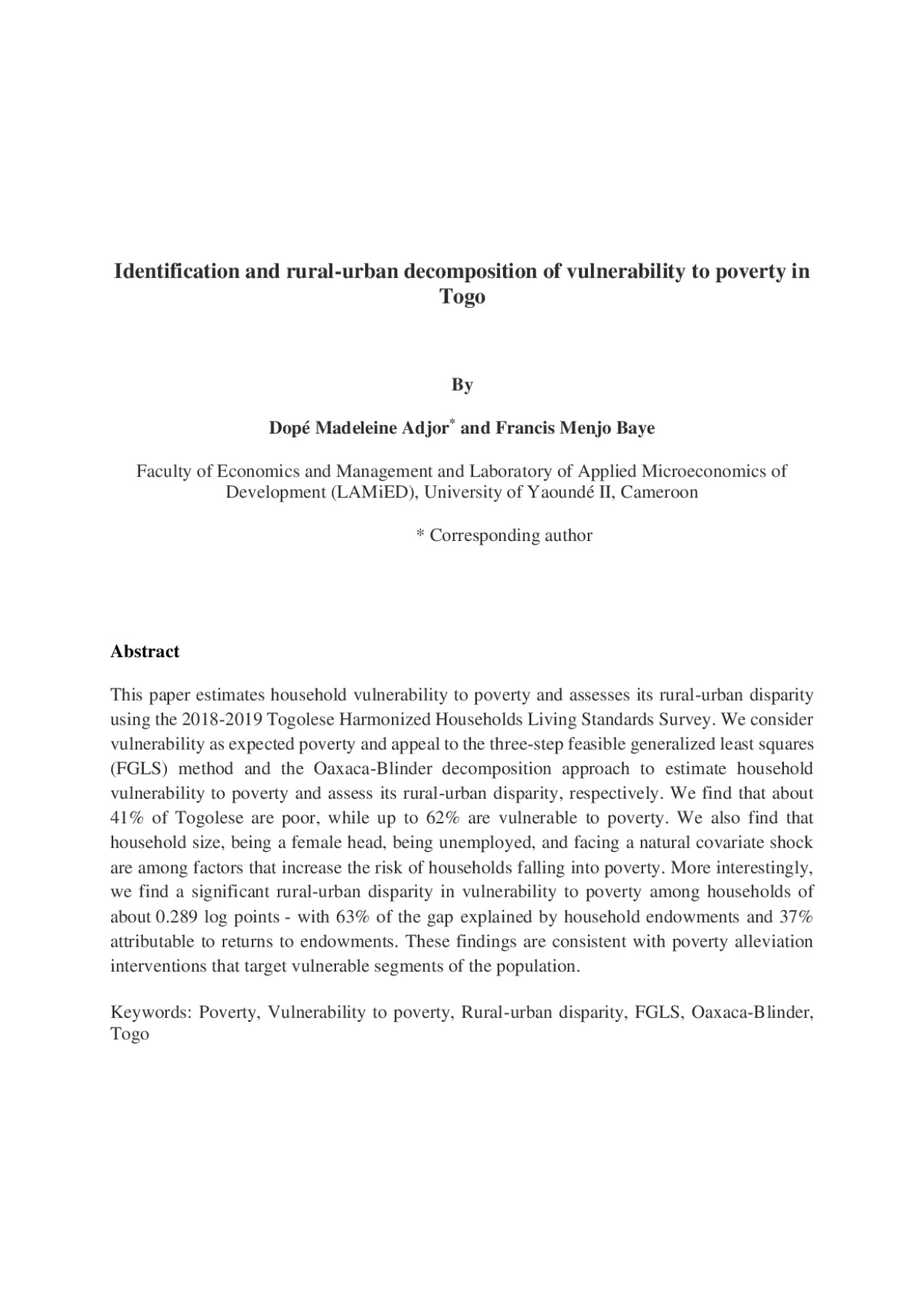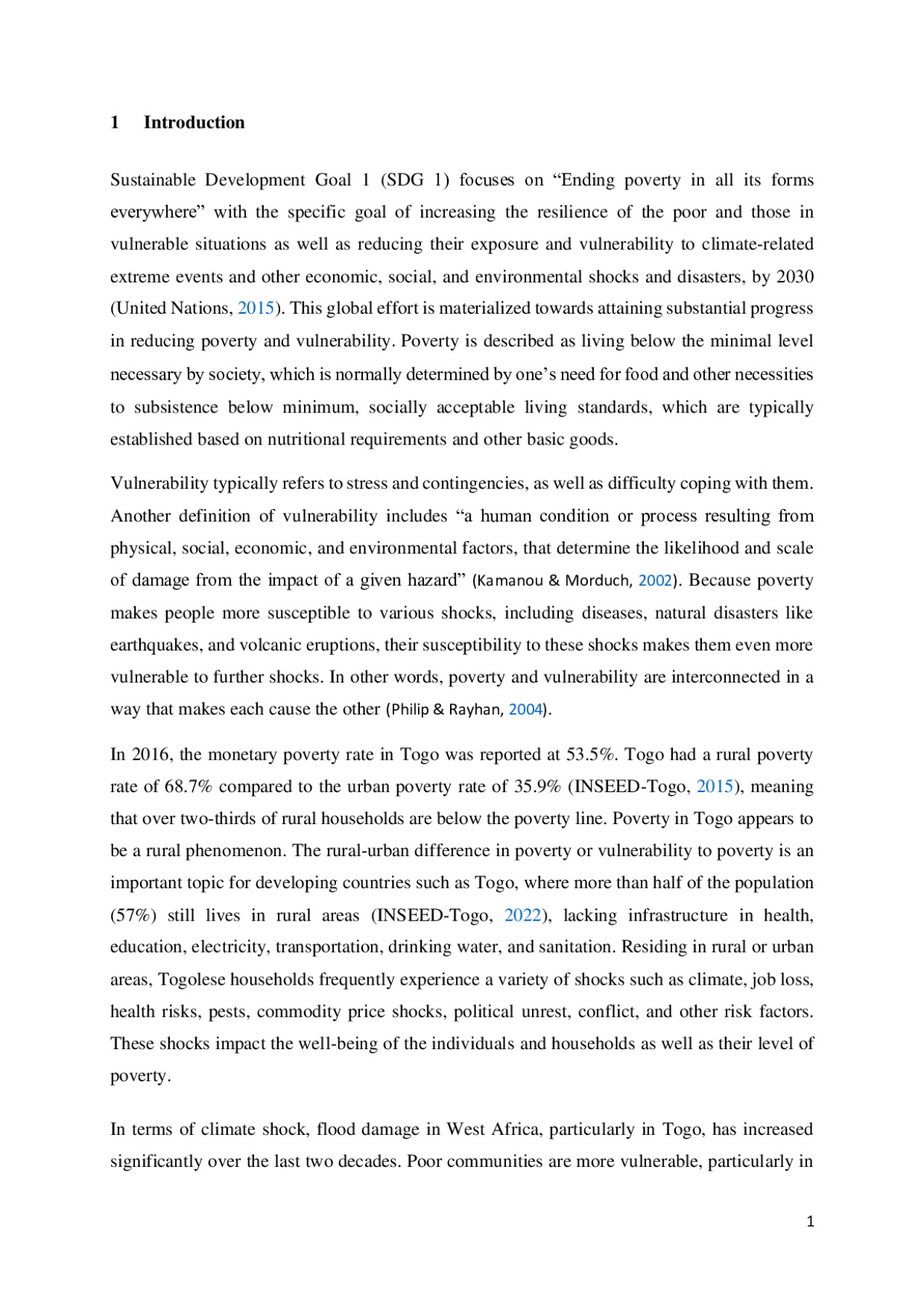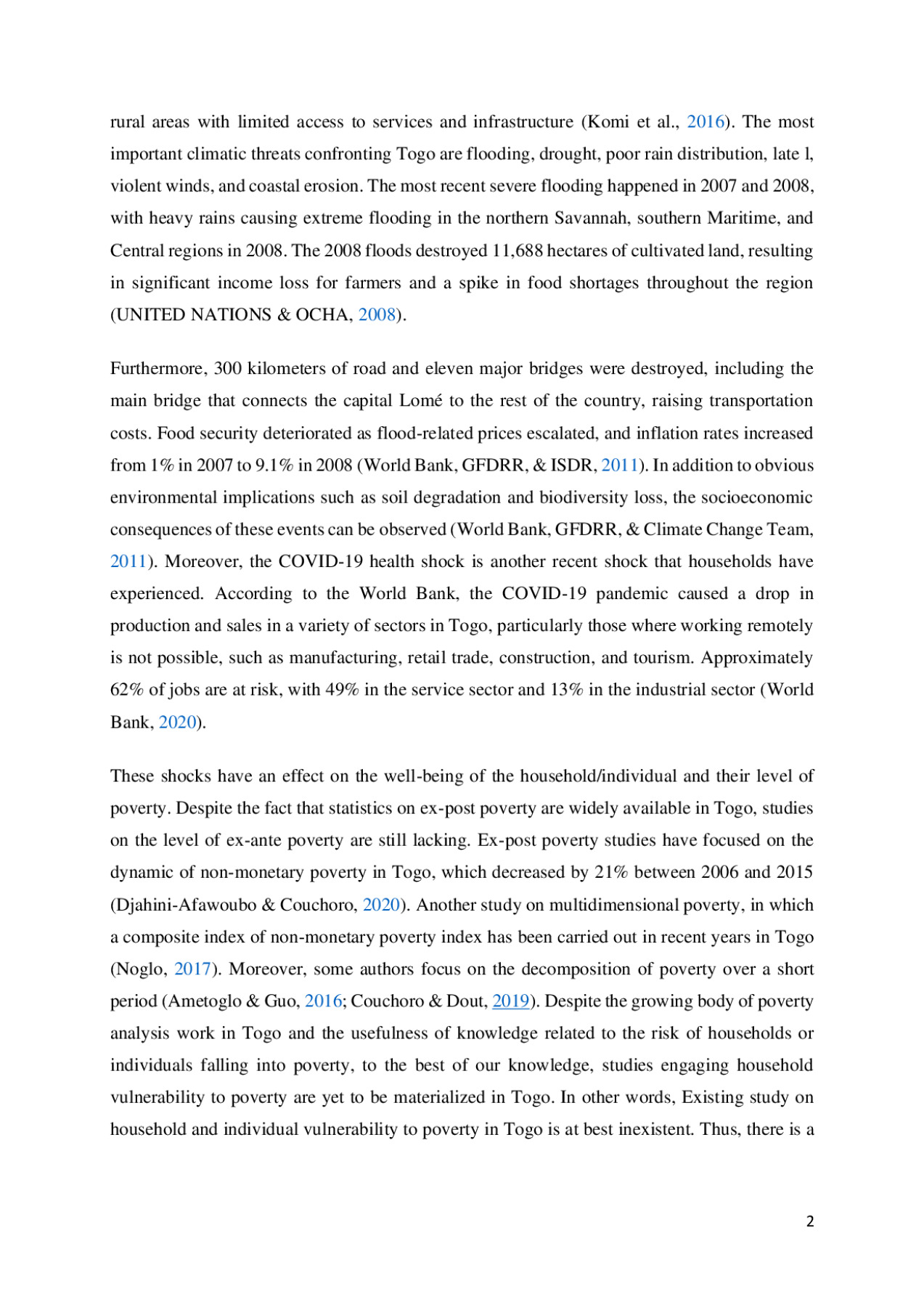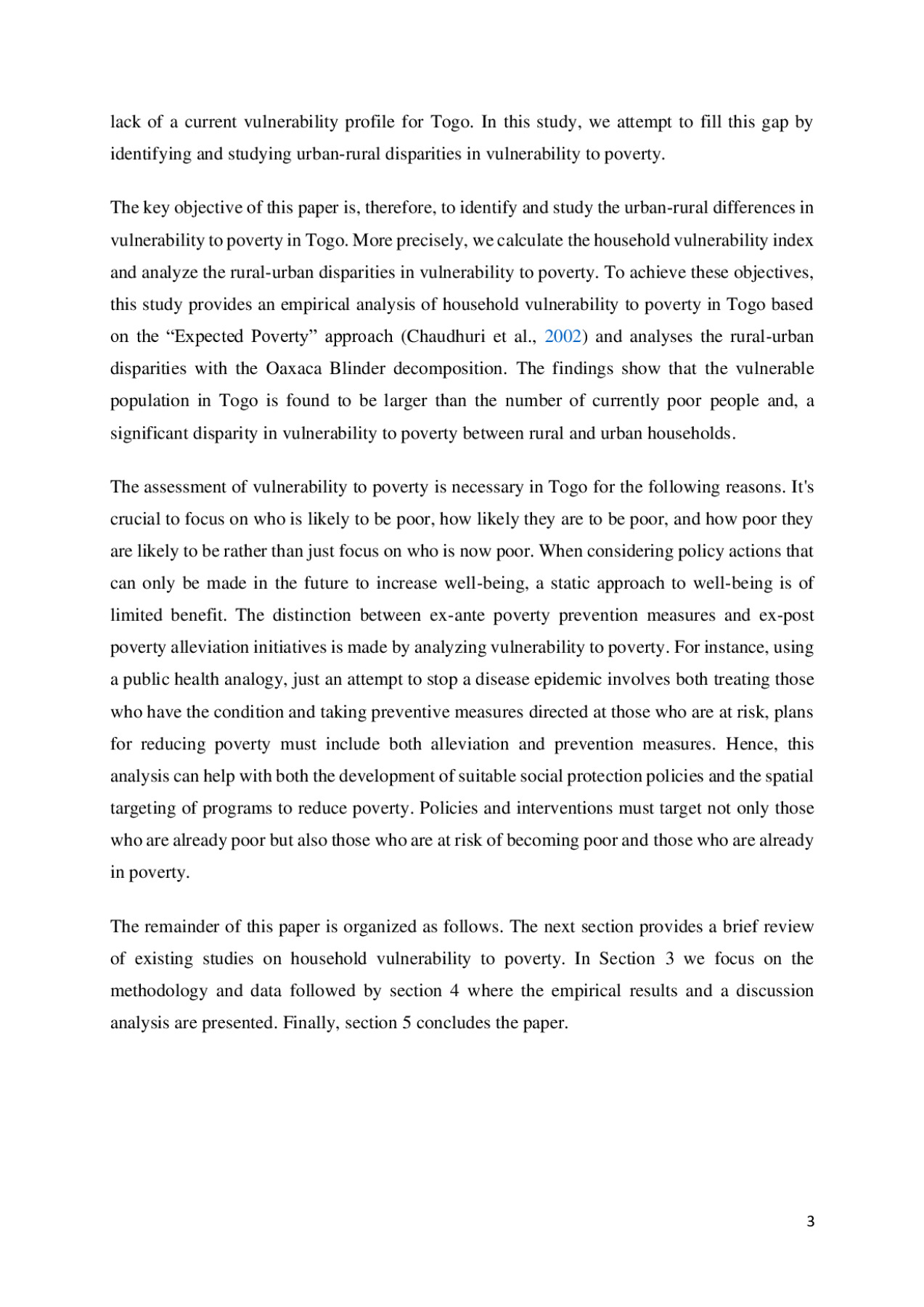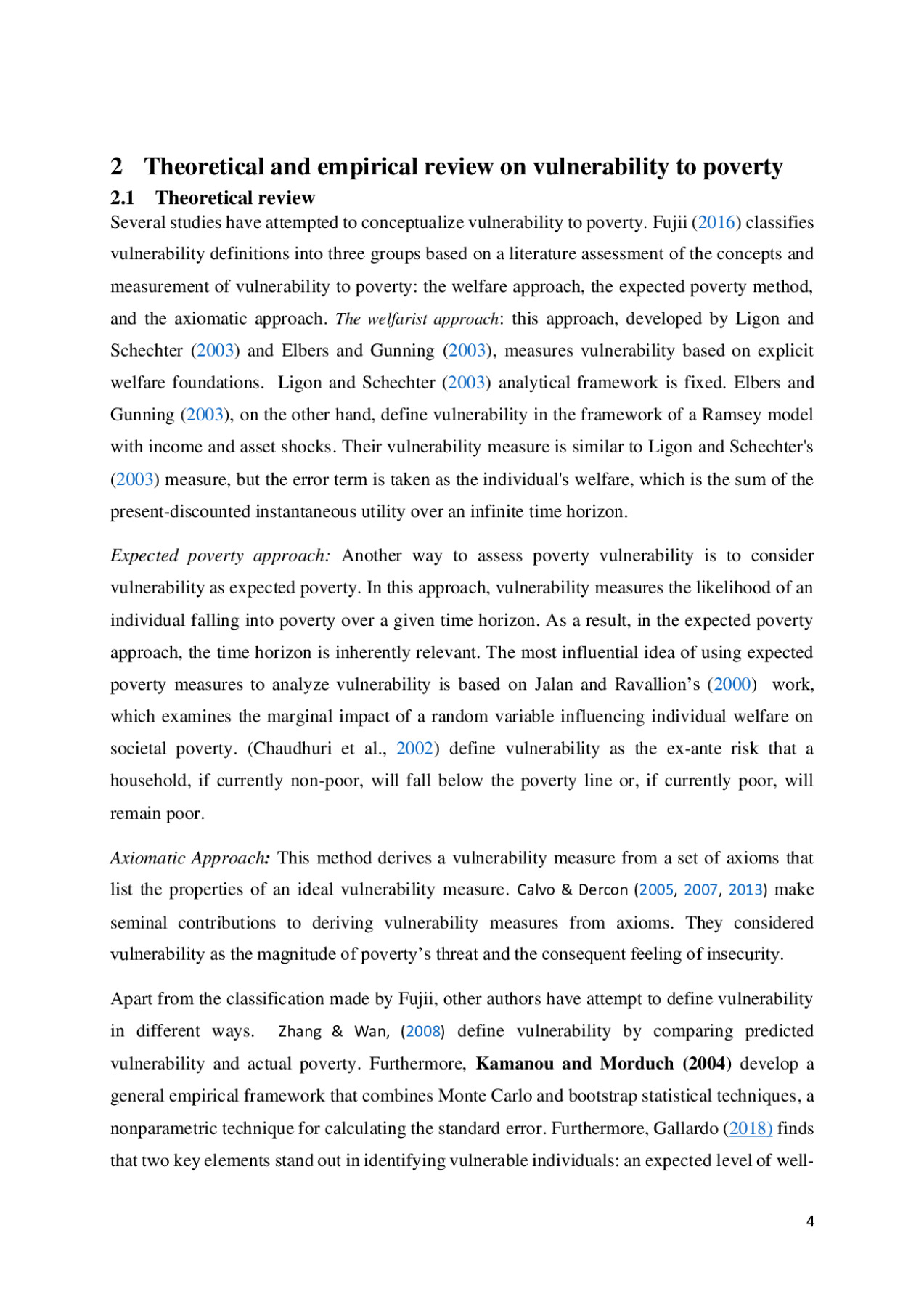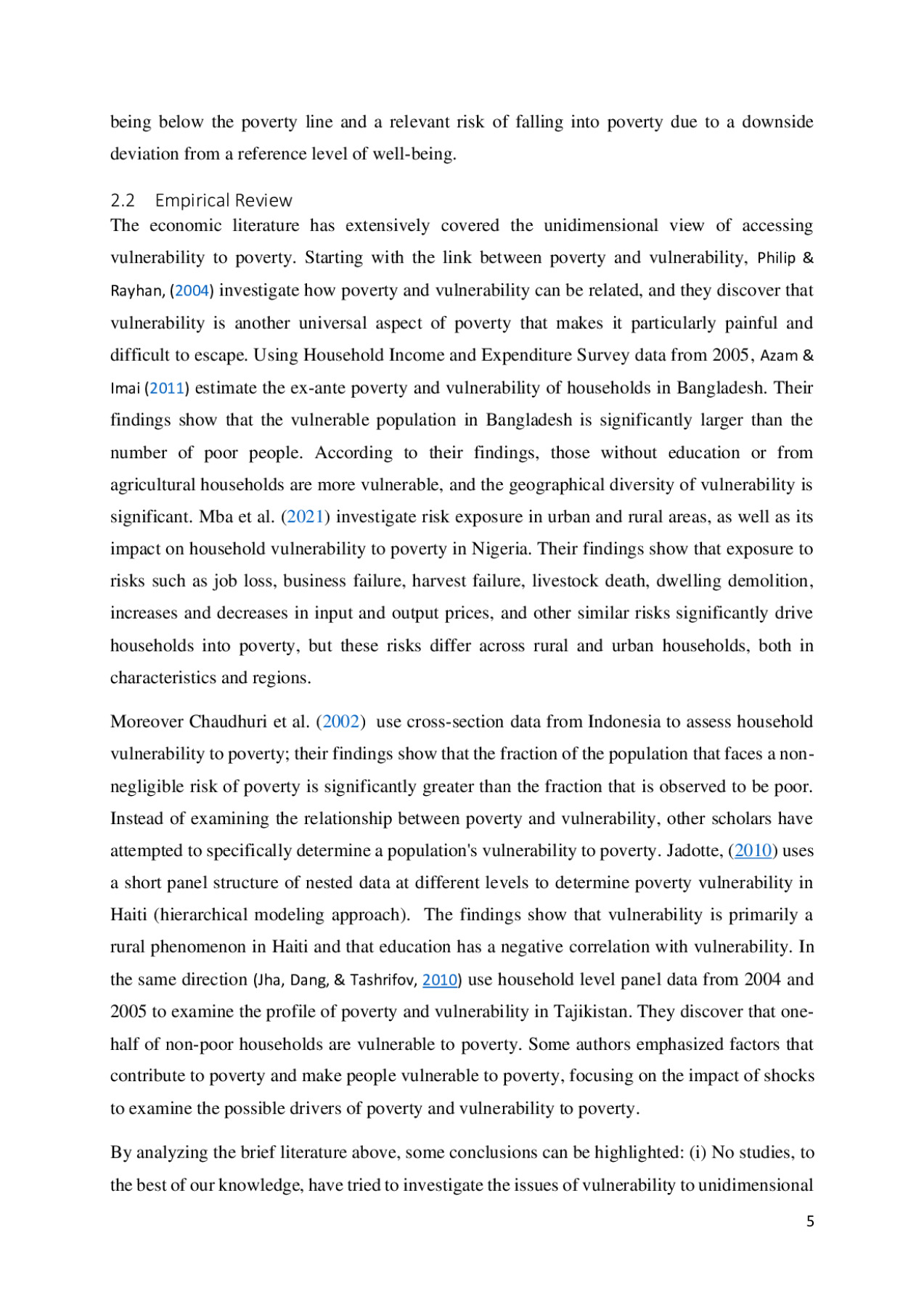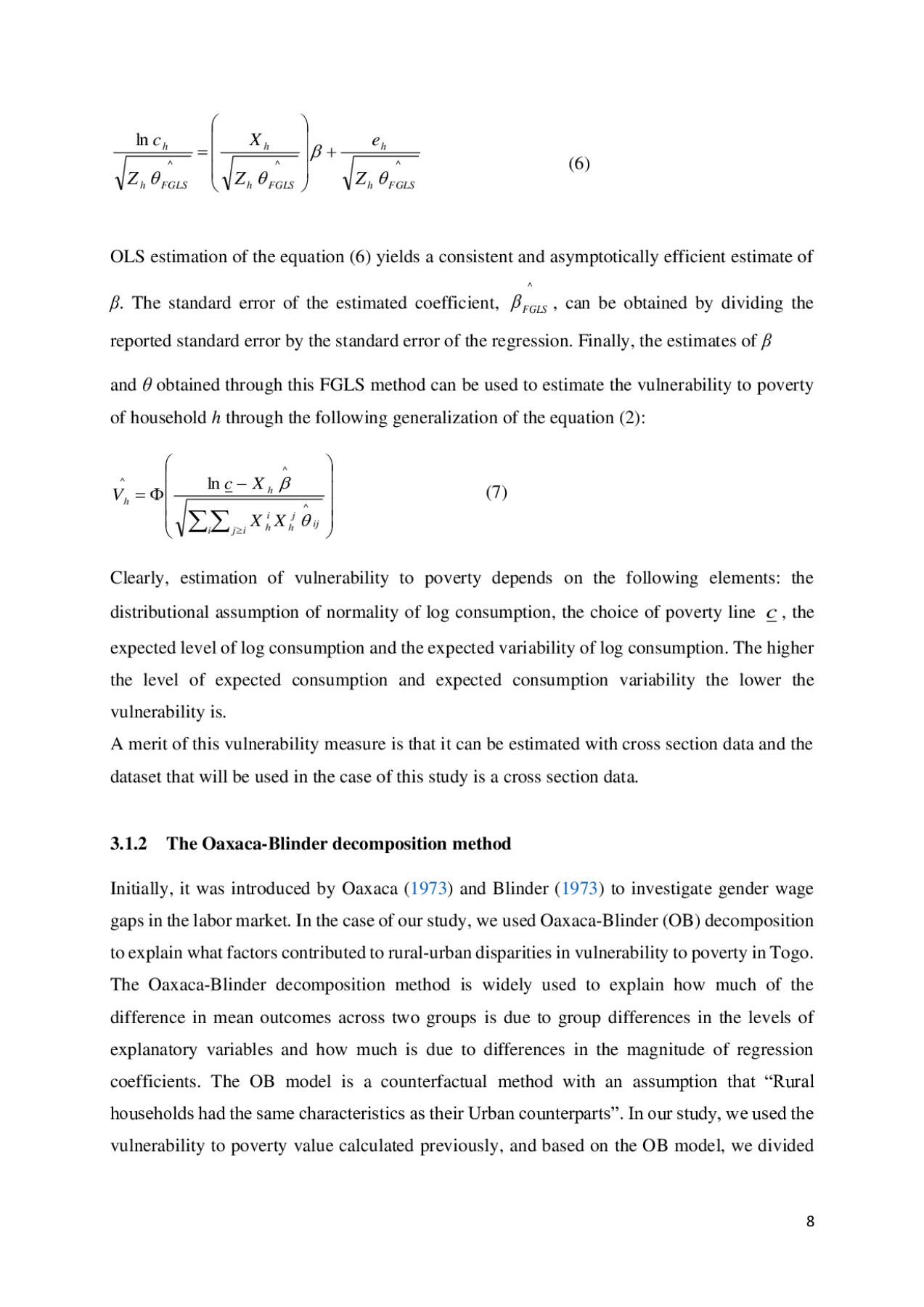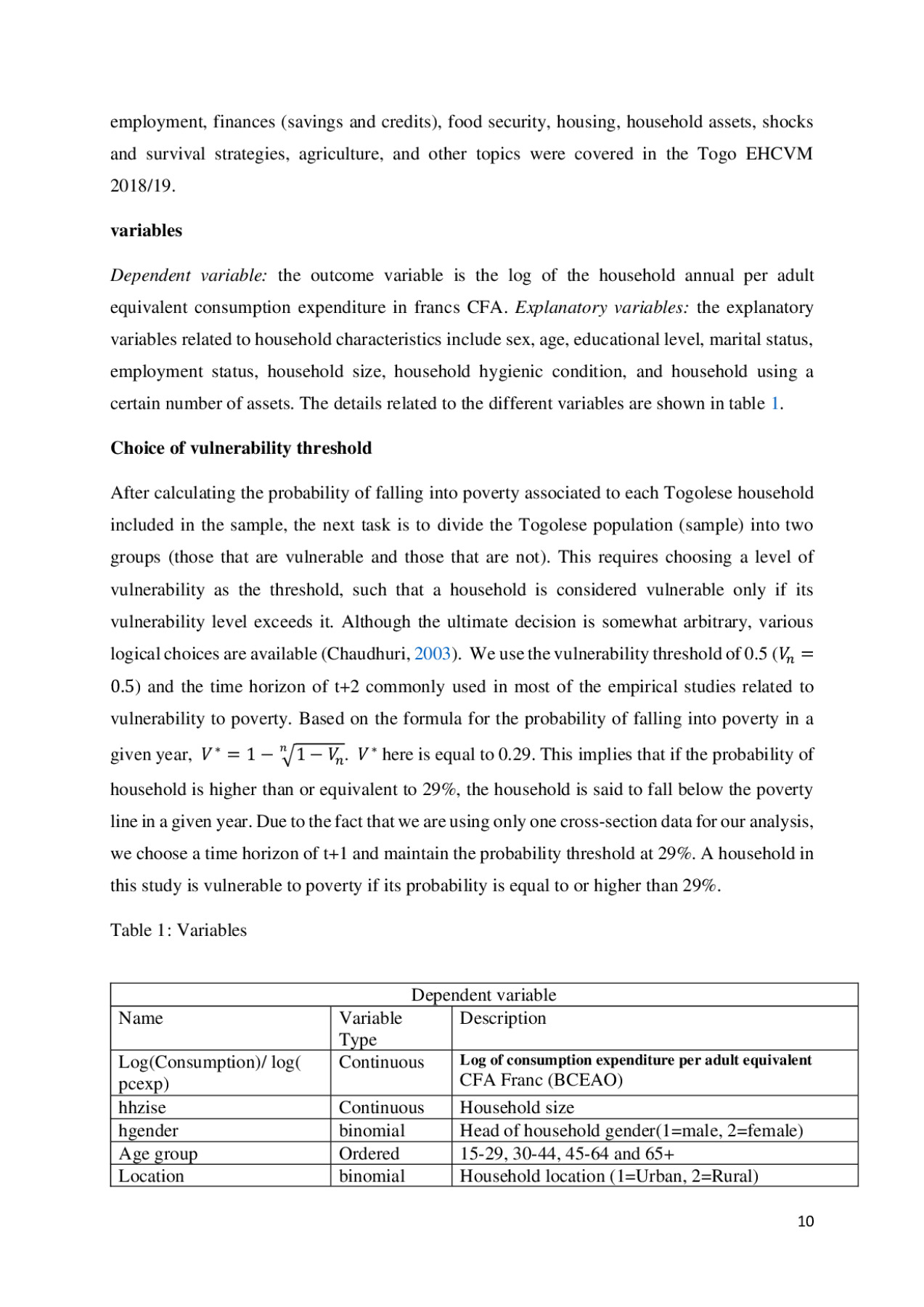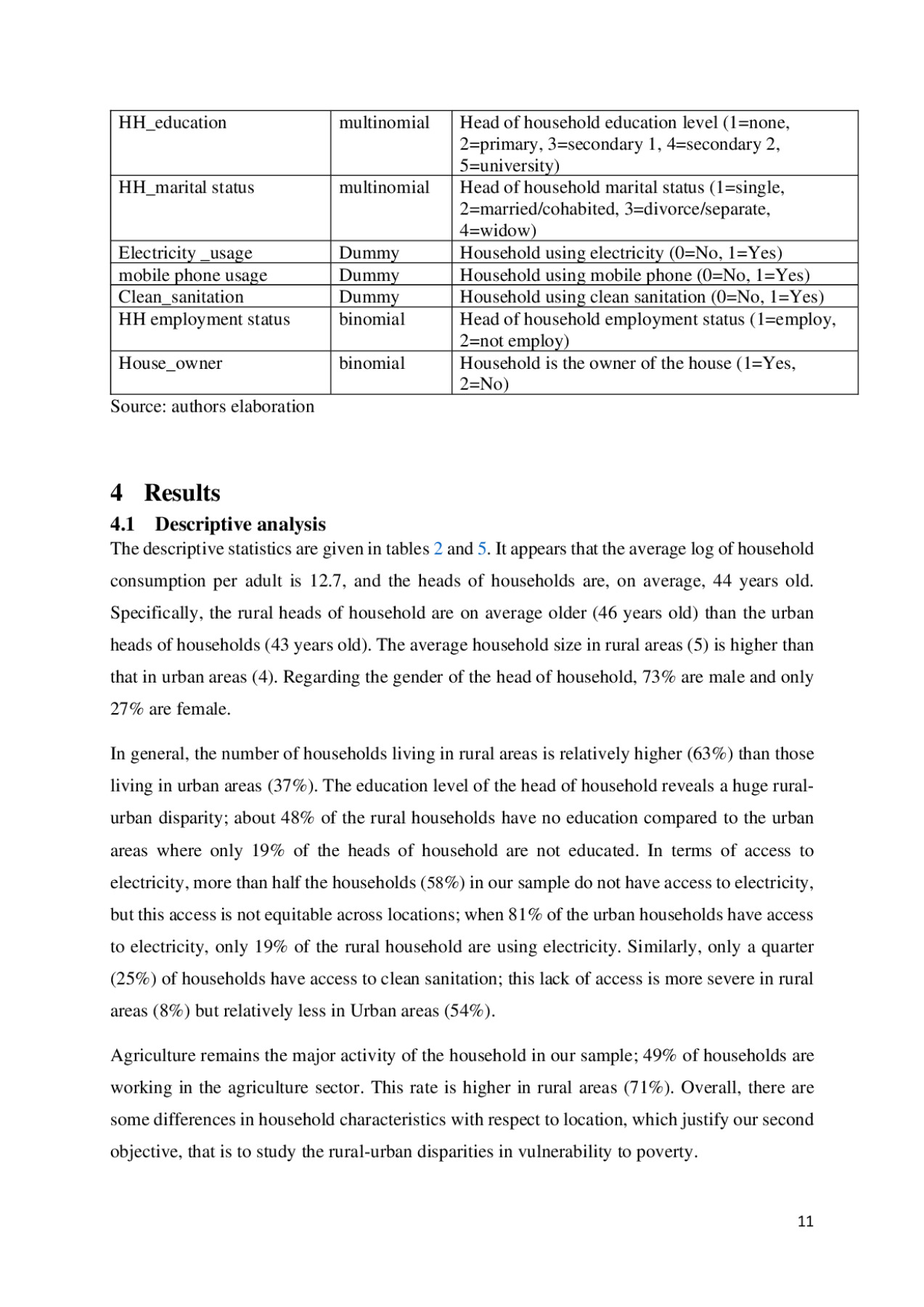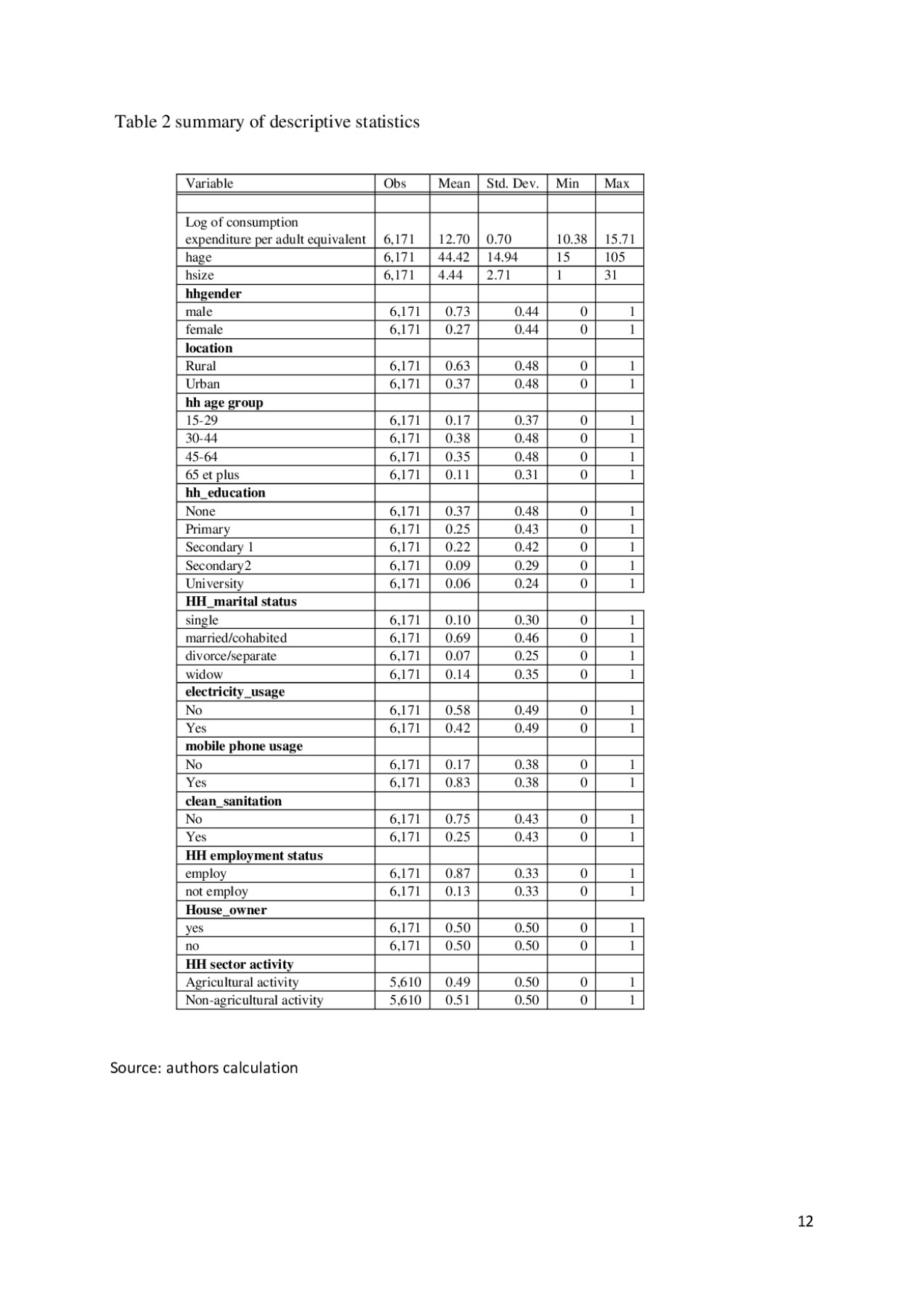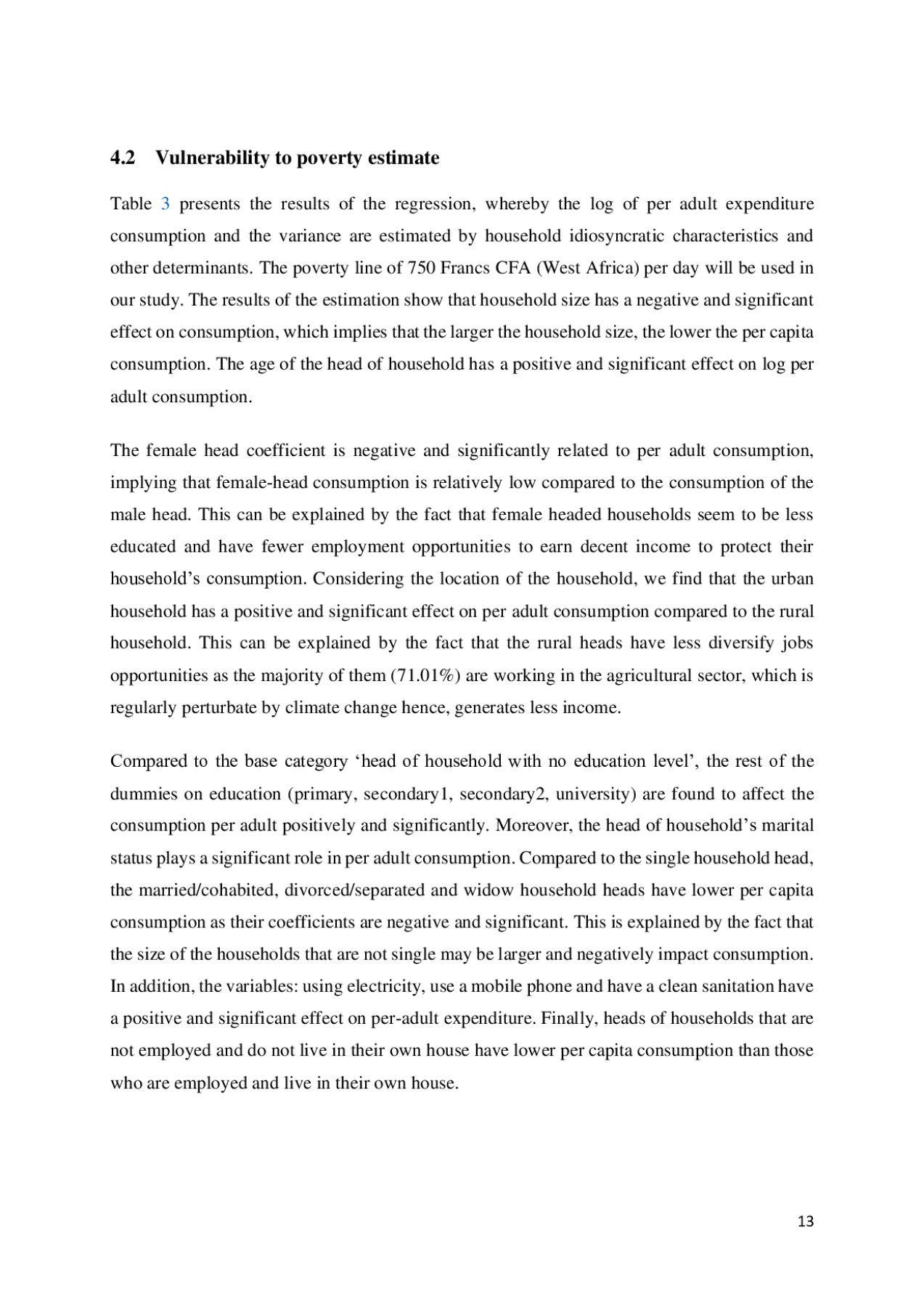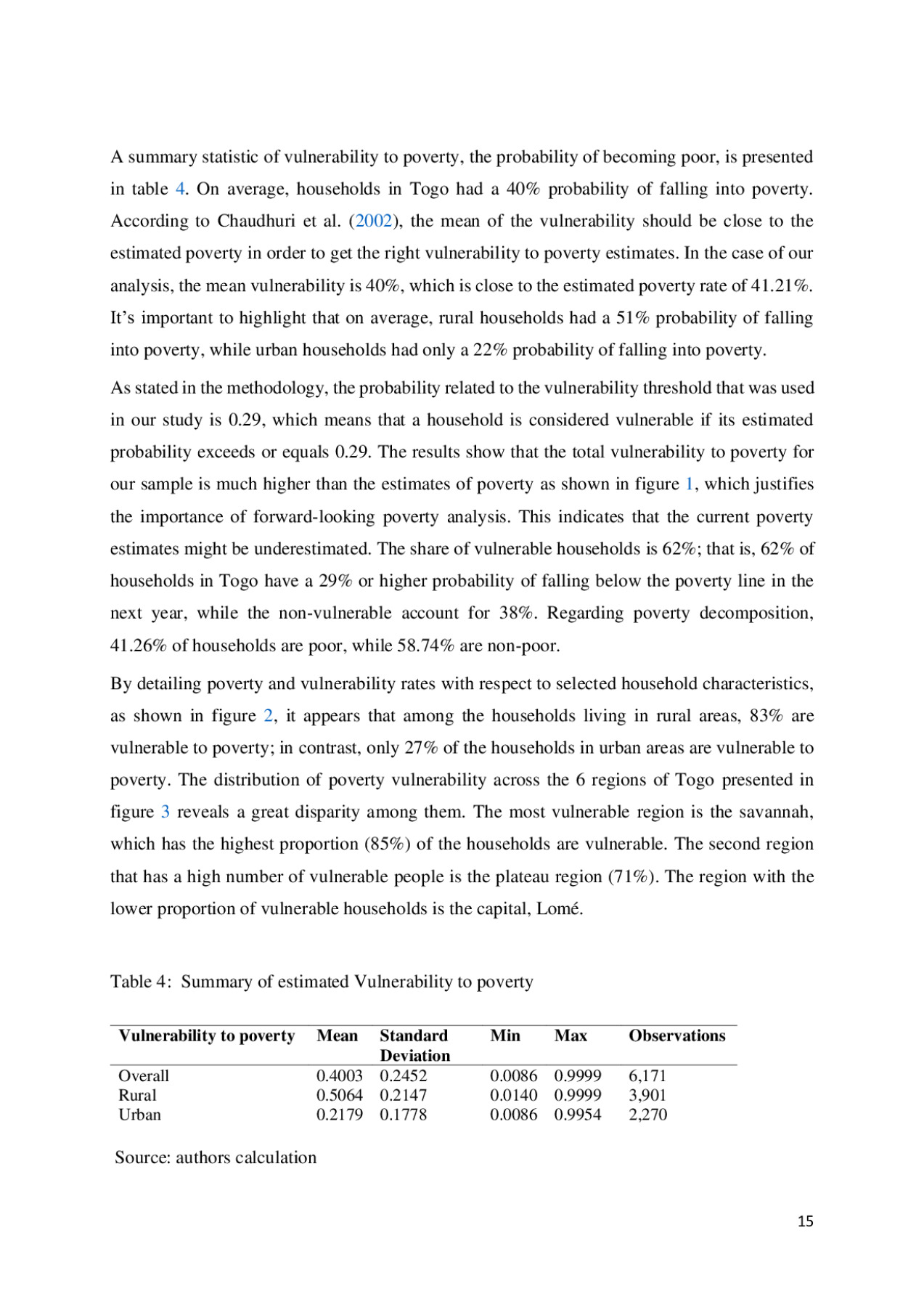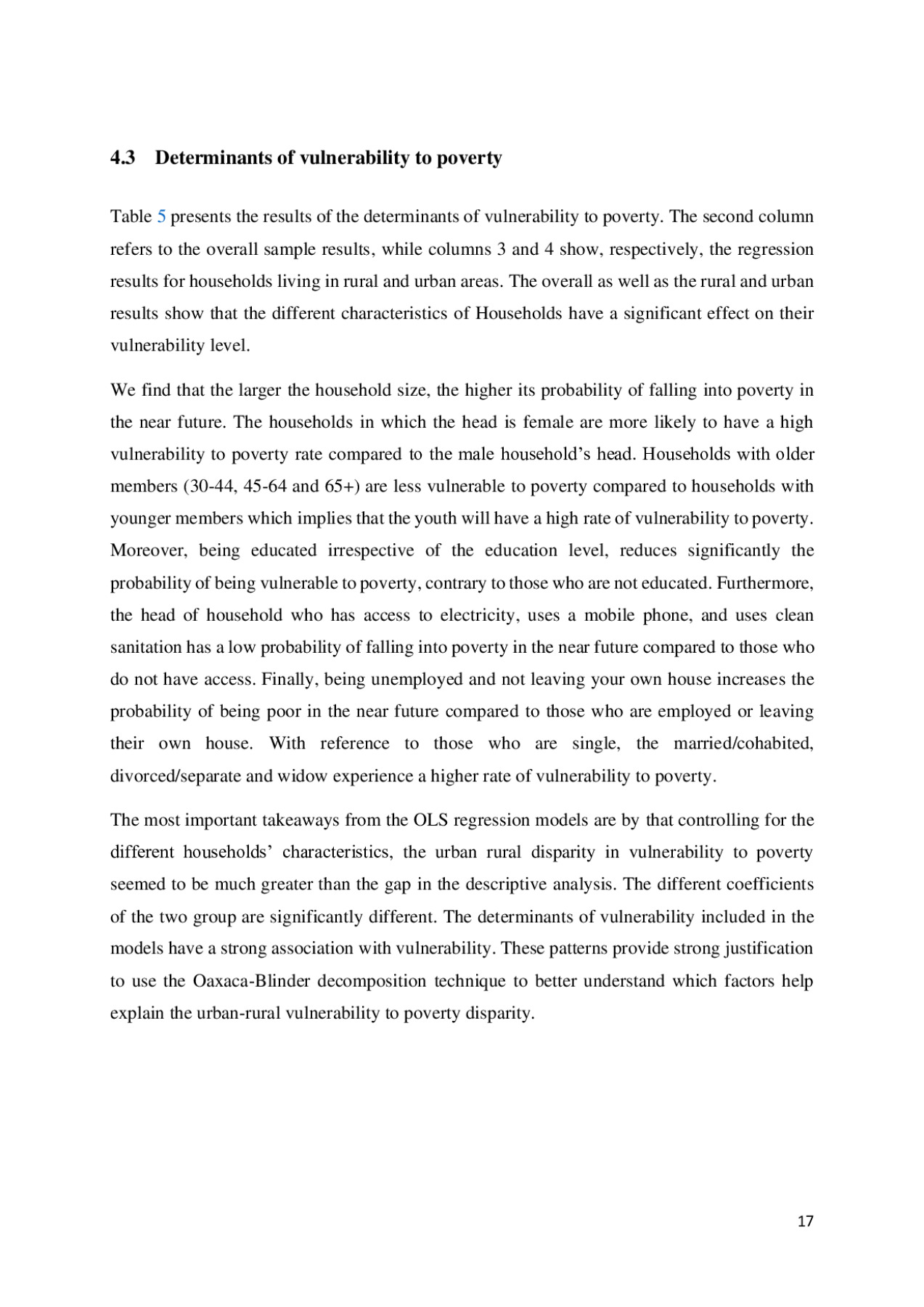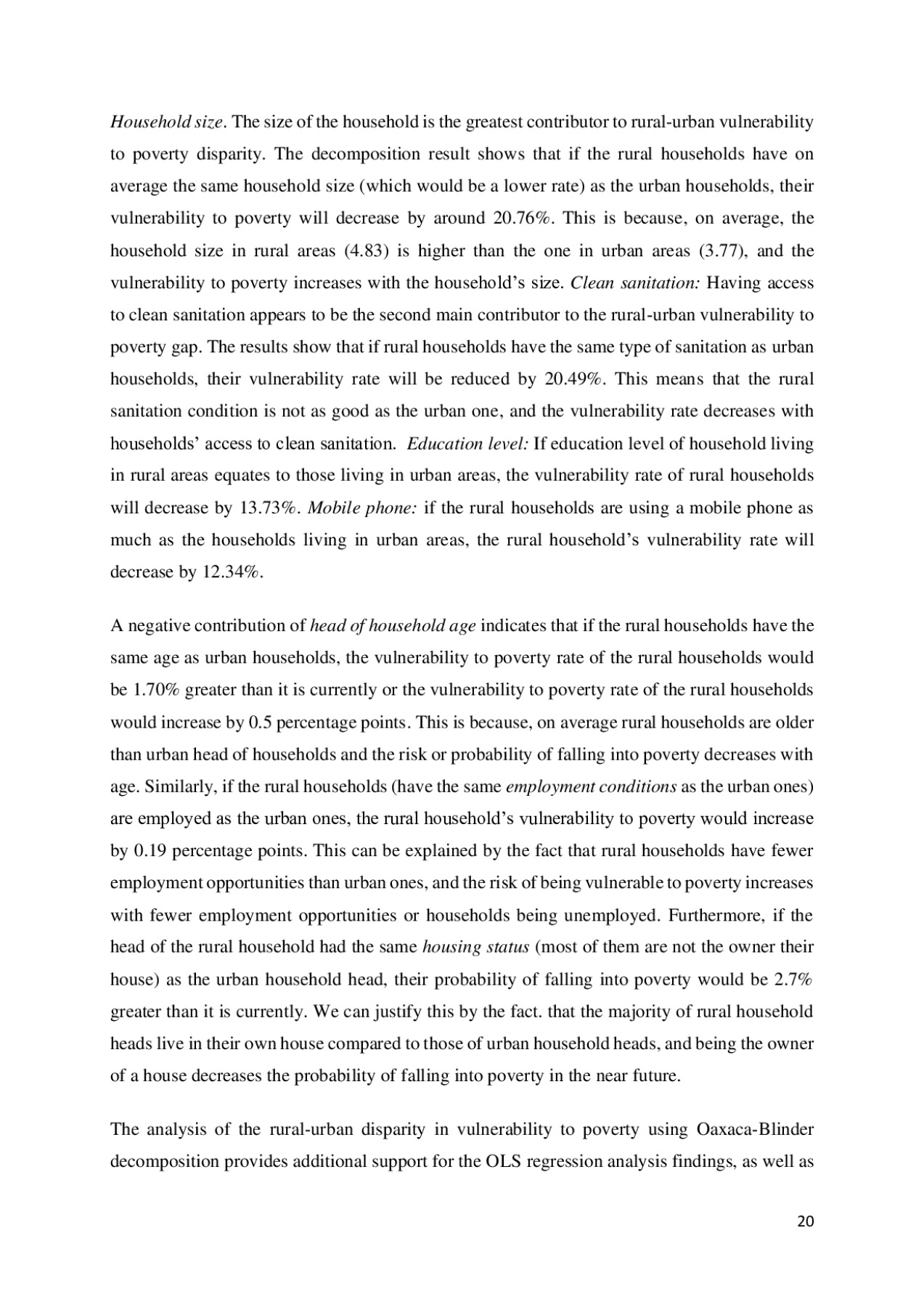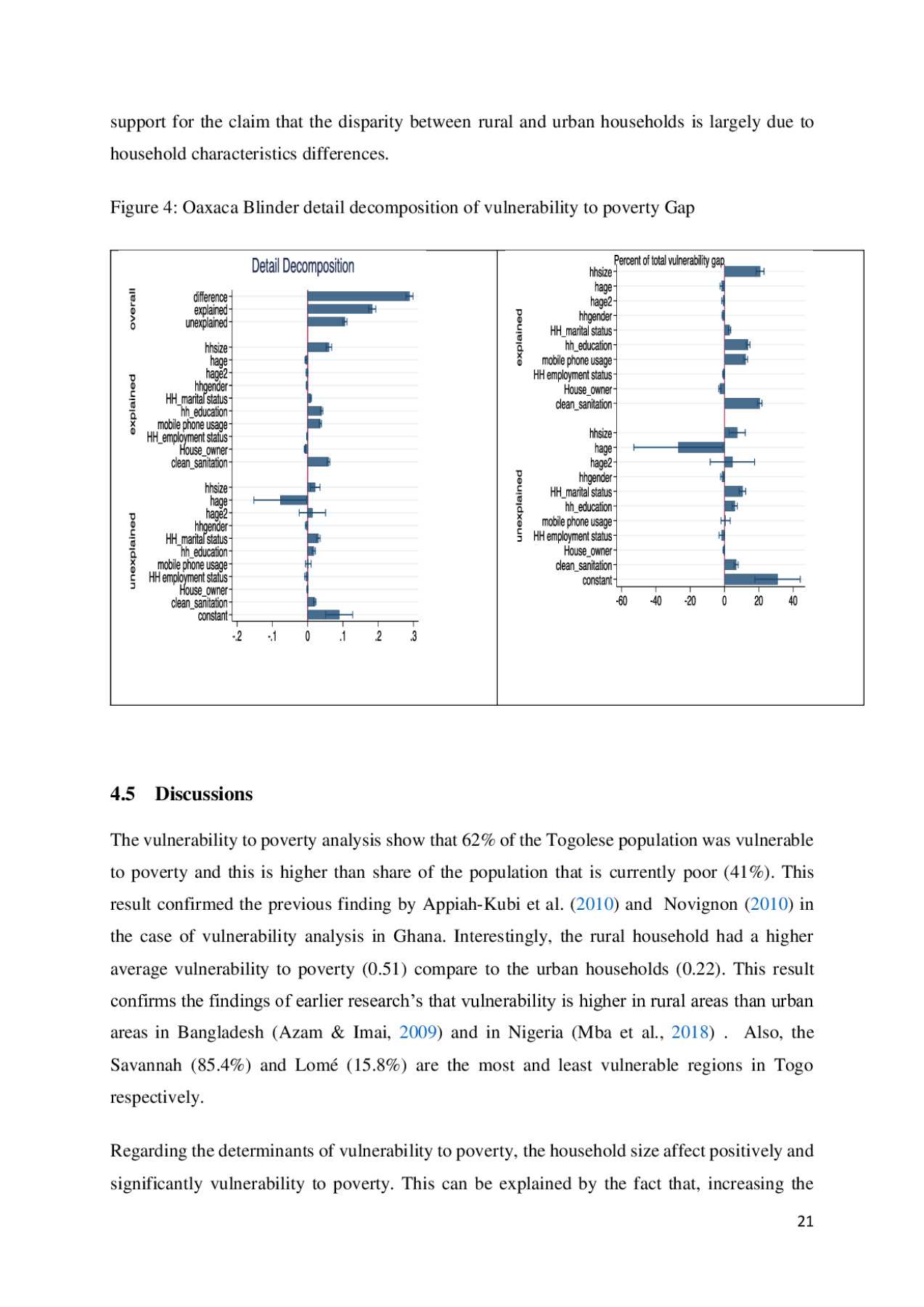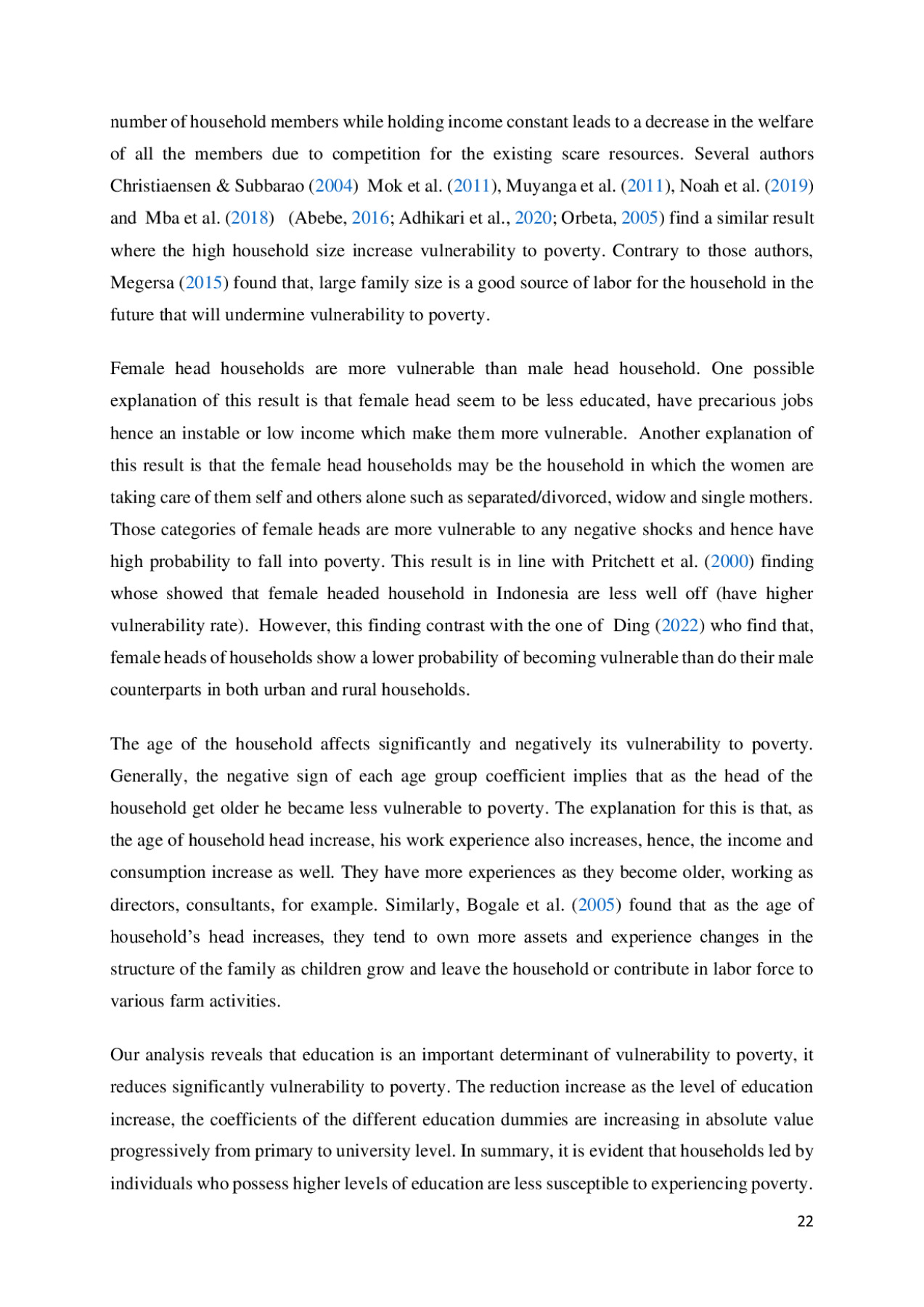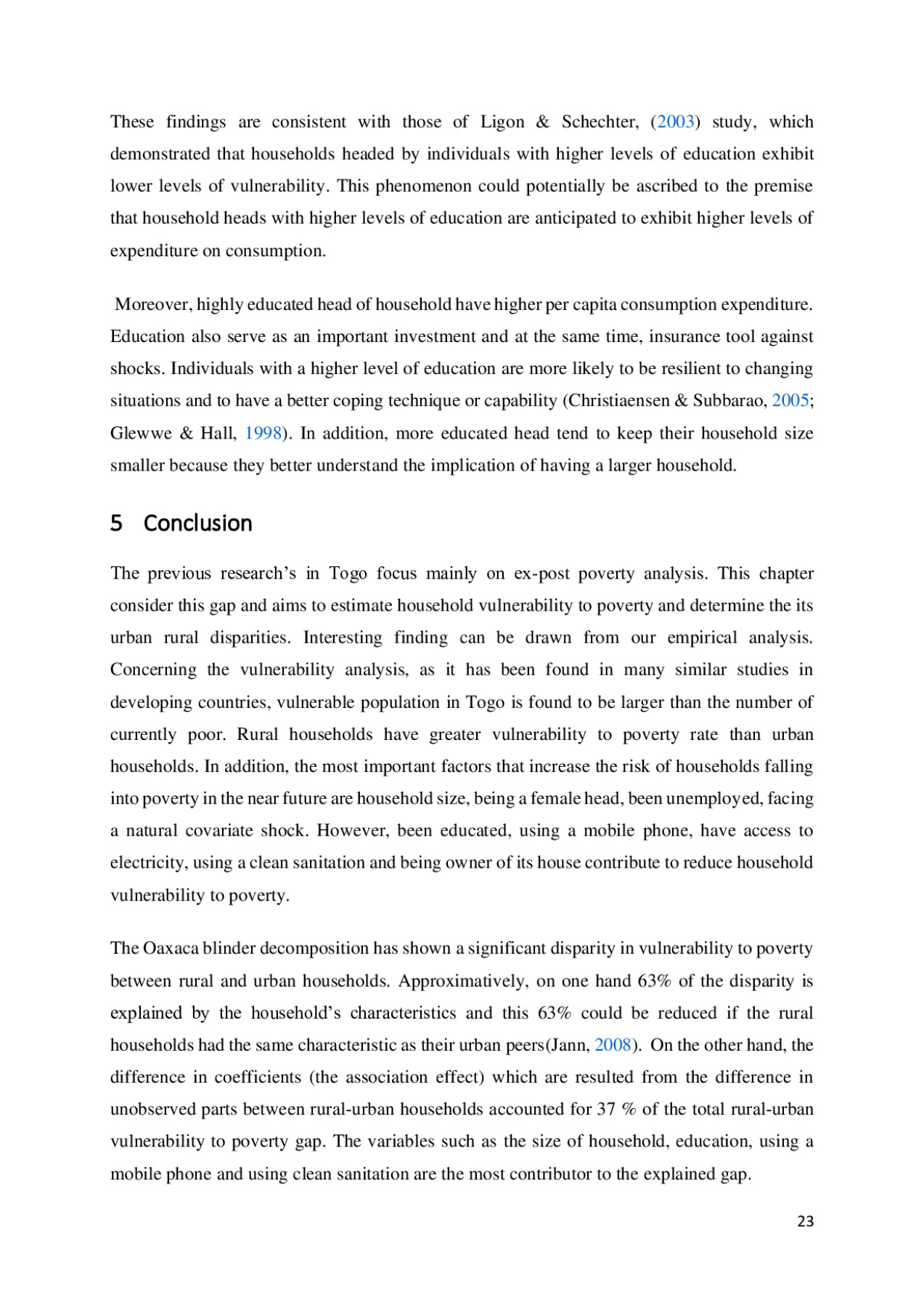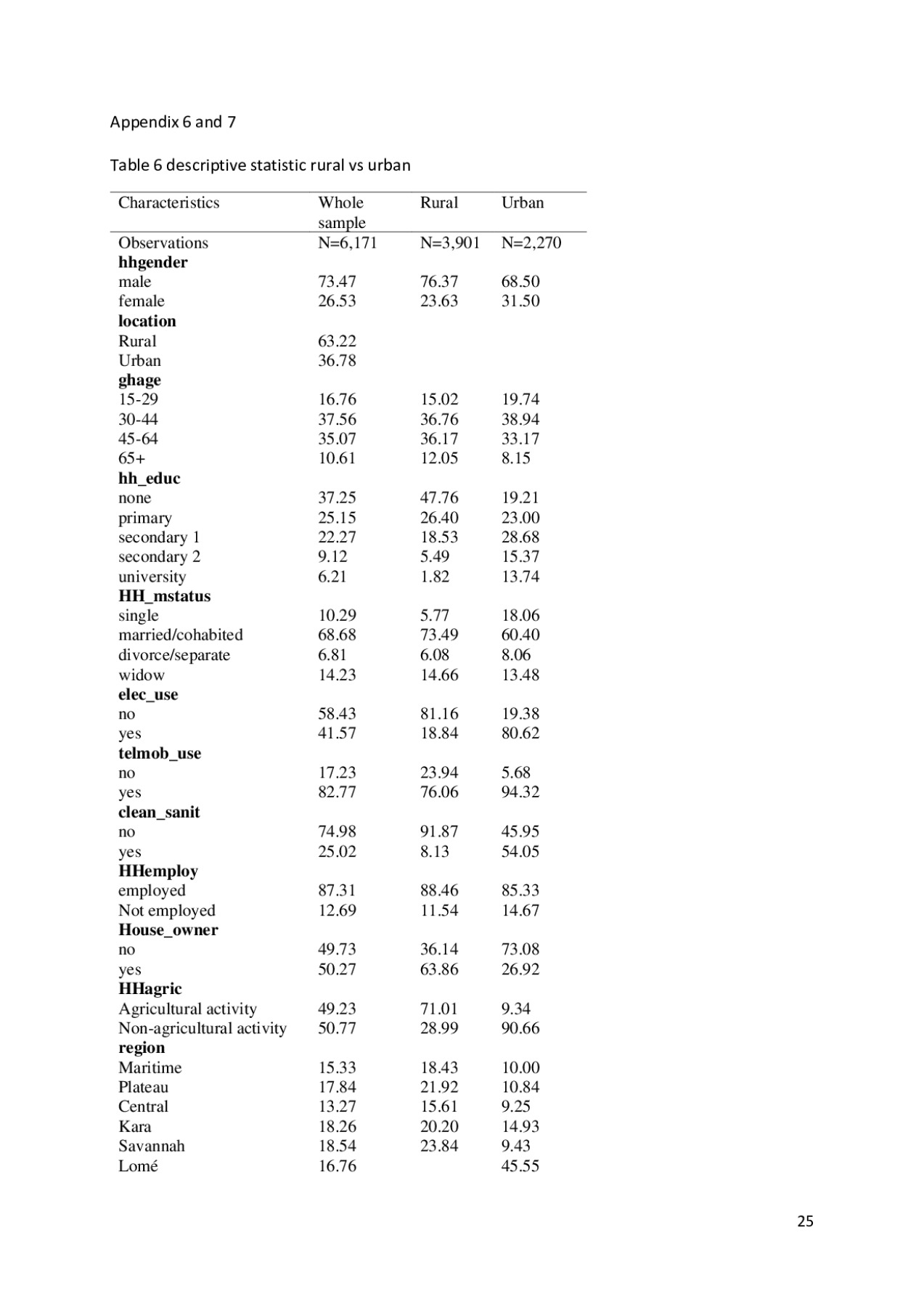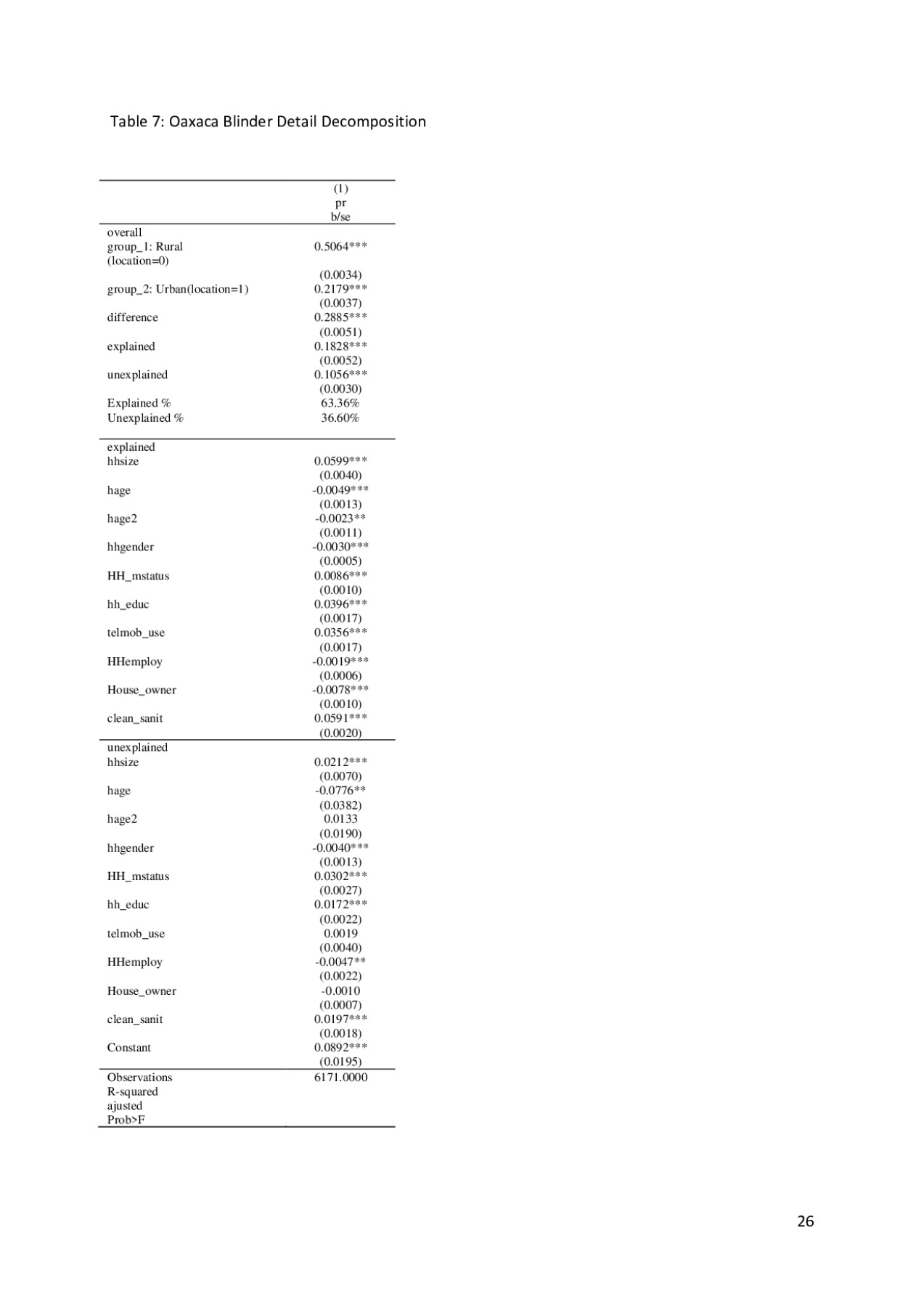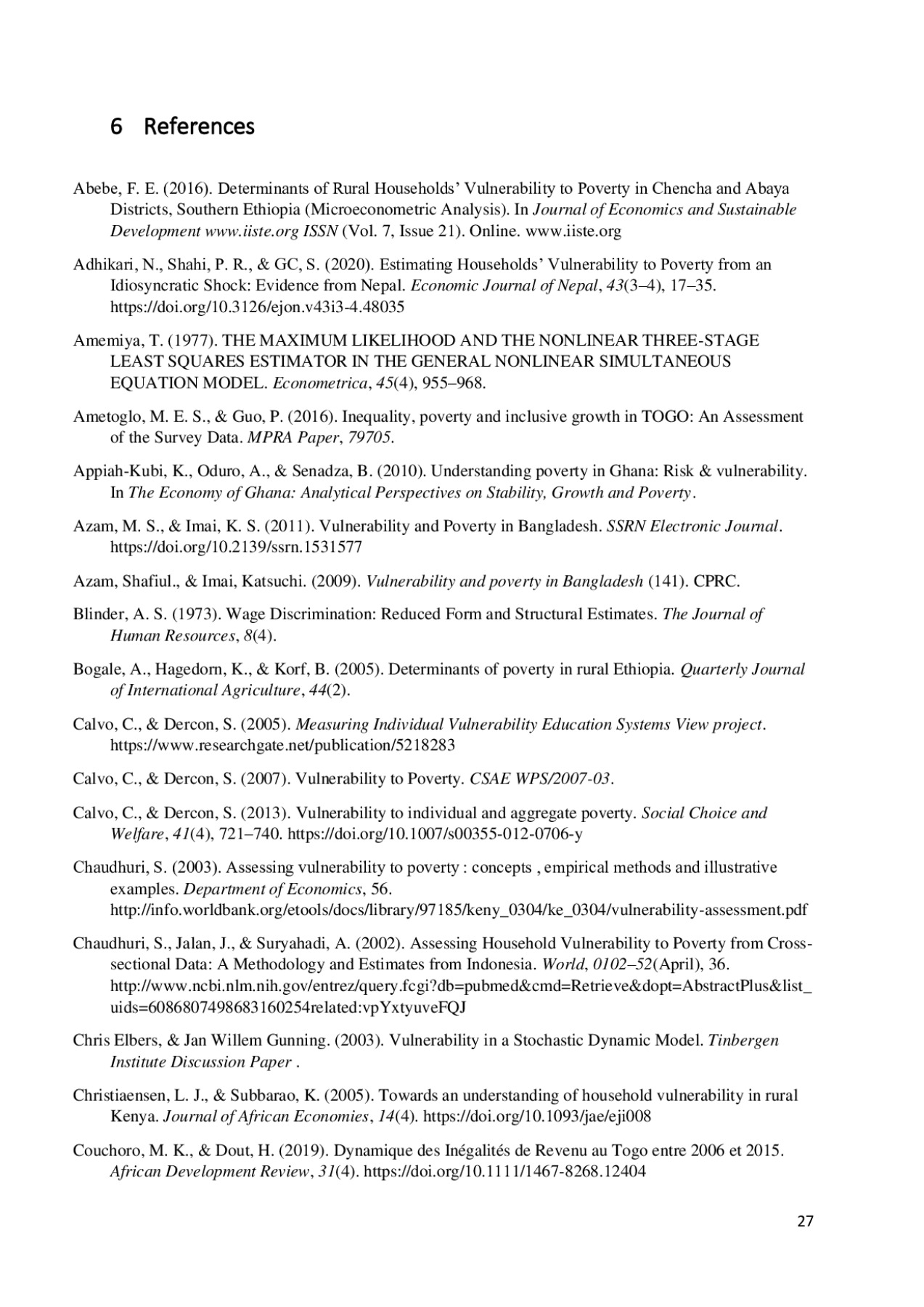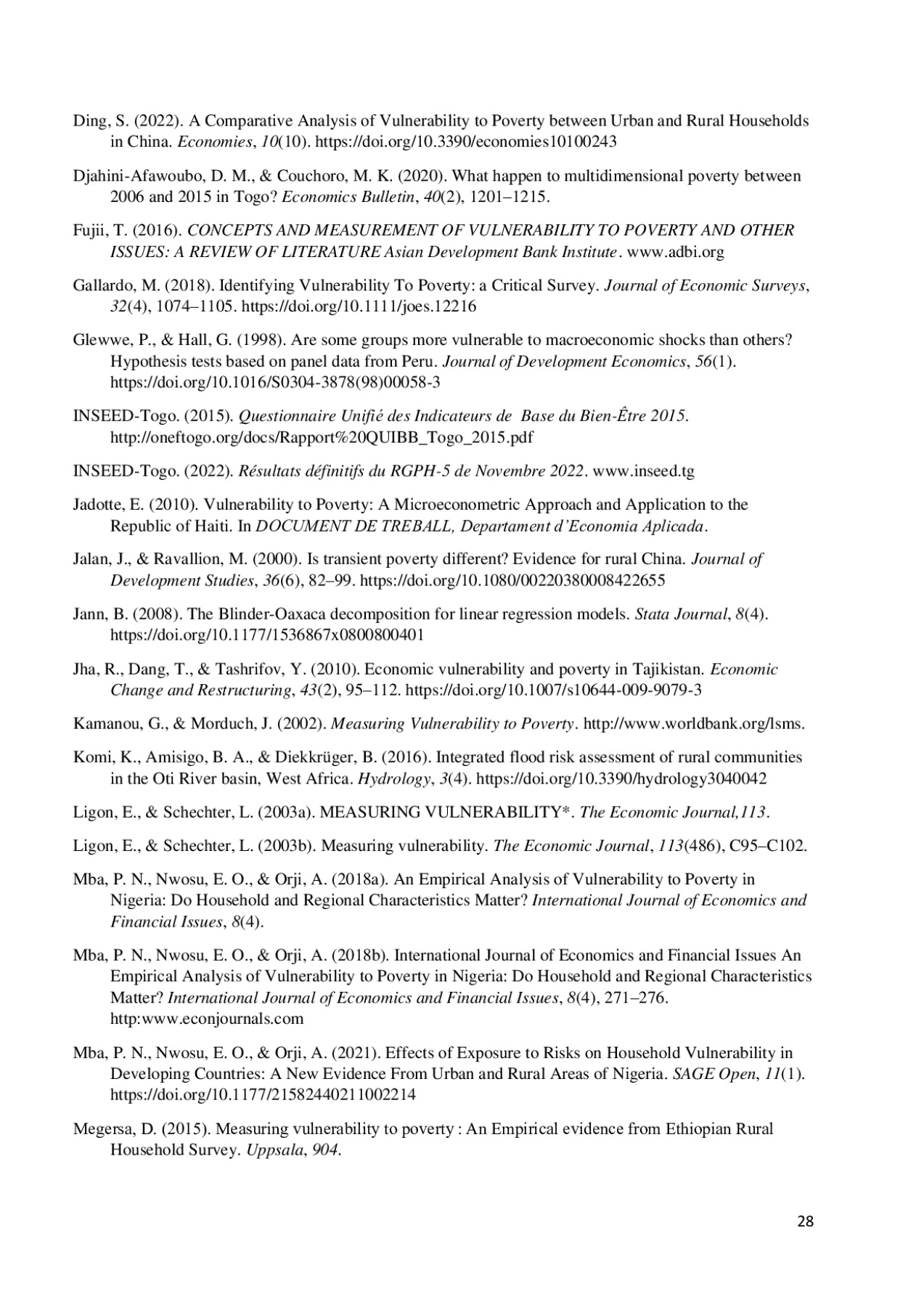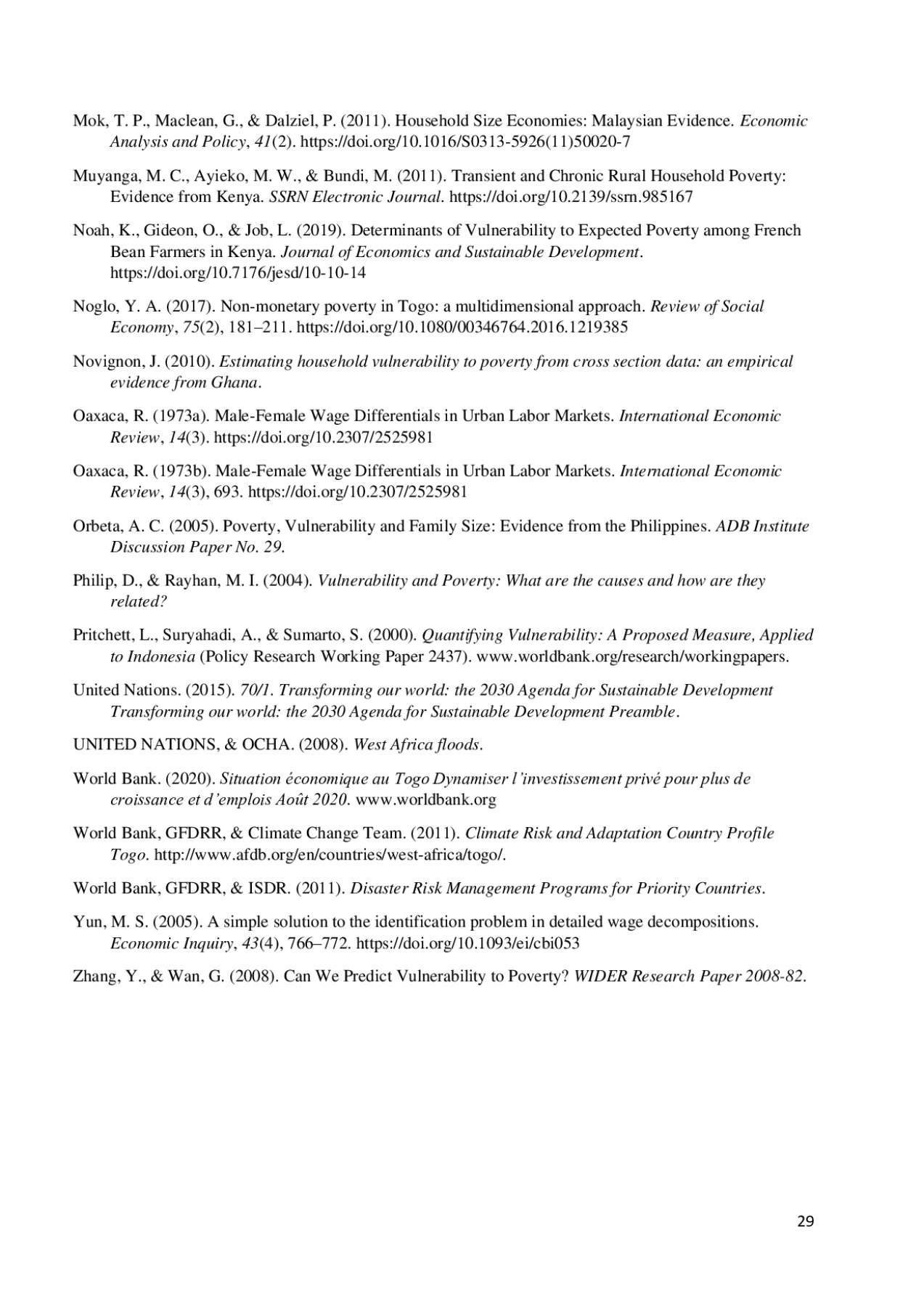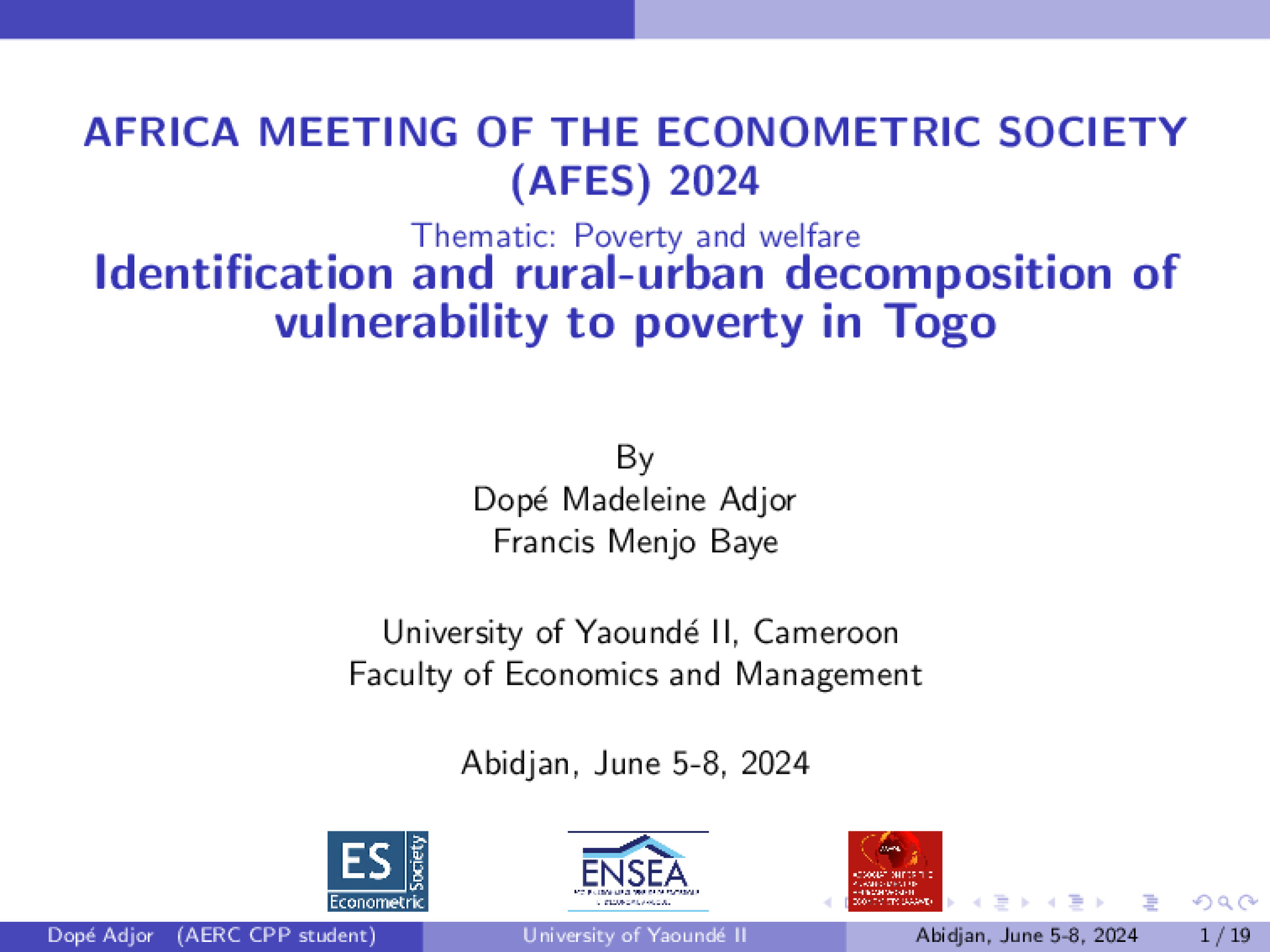2024 African Meeting, Abidjan, Côte d'Ivoire : June, 2024
Identification and rural-urban decomposition of vulnerability to poverty in Togo
Dopé Madeleine Adjor and Francis Menjo Baye
This paper estimates household vulnerability to poverty and assesses its rural-urban disparity using the 2018-2019 Togolese Harmonized Households Living Standards Survey. We consider vulnerability as expected poverty and appeal to the three-step feasible generalized least squares (FGLS) method and the Oaxaca-Blinder decomposition approach to estimate household vulnerability to poverty and assess its rural-urban disparity, respectively. We find that about 41% of Togolese are poor, while up to 62% are vulnerable to poverty. We also find that household size, being a female head, being unemployed, and facing a natural covariate shock are among factors that increase the risk of households falling into poverty. More interestingly, we find a significant rural-urban disparity in vulnerability to poverty among households of about 0.289 log points - with 63% of the gap explained by household endowments and 37% attributable to returns to endowments. These findings are consistent with poverty alleviation interventions that target vulnerable segments of the population.
Preview
